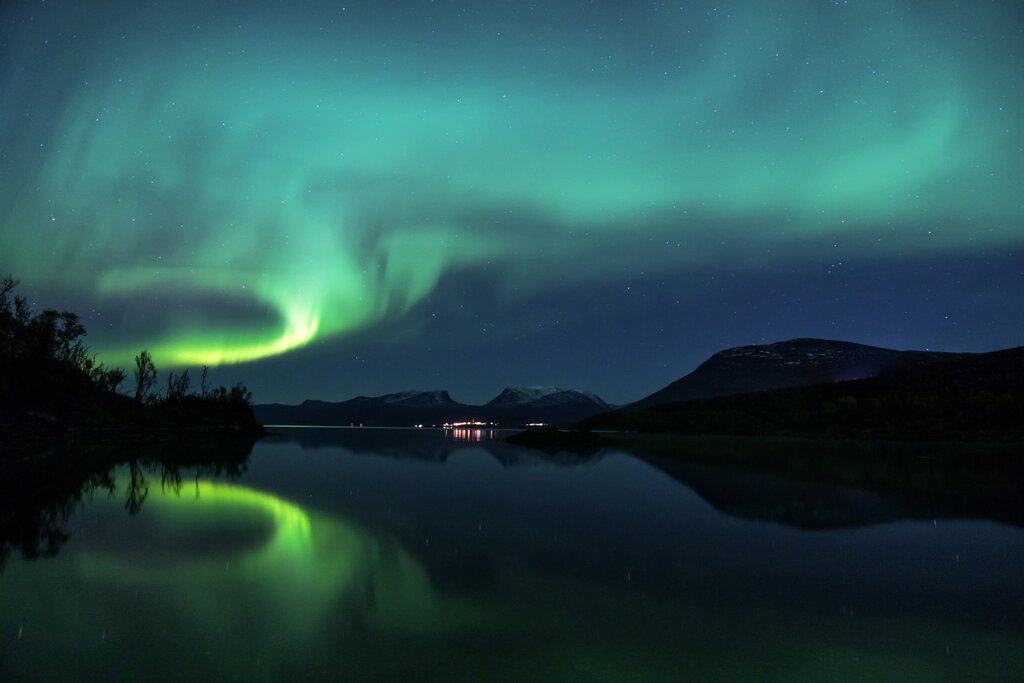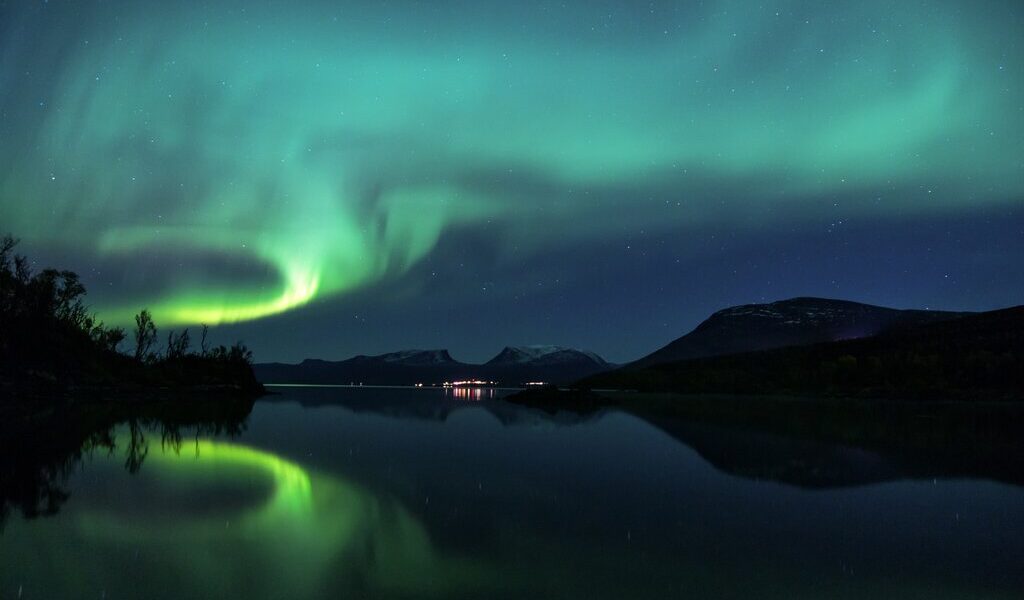
As daylight hours increase and sunlight begins to return across snowy Sweden in February, Swedes hit the slopes for their snow sports holidays while festivals bring cheer to several towns and cities. Travel ideas include sojourns to Southern Sweden’s spas, skiing in Central Sweden’s resorts, and northern lights viewing in the Arctic North.
## Sweden in February: A Winter Wonderland Awaits
February in Sweden presents a captivating blend of frosty landscapes, vibrant cultural events, and the ethereal dance of the Northern Lights. While temperatures remain consistently cold throughout the country, the increased sunshine hours and thick snow cover create the perfect setting for a memorable winter escape.
**Weather:**
The weather in Sweden during February closely mirrors that of January, with temperatures firmly below freezing. In Stockholm, the capital city, average temperatures hover around 29°F (-2°C), while in Arctic Lapland, you can expect a much colder average of around 11°F (-11°C). This consistent chill also contributes to February being one of Sweden’s driest months, sharing that distinction with January and March. However, don’t let the cold deter you! The combination of these factors, coupled with a significant increase in daylight hours compared to the preceding months, creates optimal conditions for a variety of exciting winter activities. The snow cover reaches its peak thickness, providing excellent opportunities for skiing and snowboarding. The lakes freeze over, transforming into natural skating rinks, and the winter landscapes sparkle and gleam invitingly under the crisp sunlight.
Moreover, February offers a unique opportunity to witness one of the most breathtaking natural phenomena on Earth: the Northern Lights. In the Arctic North, this celestial spectacle unfolds throughout the month, painting the night sky with mesmerizing hues of green, pink, and purple. It’s truly an unforgettable experience.
**Crowds & Costs:**
February marks the arrival of peak season in the snow-covered regions of Central and Northern Sweden. This is where you’ll find the nation’s most renowned and expansive ski resorts, attracting both locals and international visitors. Swedes cherish their February vacation, known as *sportlovet*, or “sport holiday,” and dedicate this time to indulging in snow sports. As a result, accommodation in popular resort towns such as Åre becomes highly sought after, with availability at a premium as Swedes flock to the slopes. While foreign visitors are becoming increasingly aware of Sweden’s appeal as a premier winter sports destination, the crowds primarily consist of local enthusiasts during this time. In the major cities, such as Stockholm and Gothenburg, you’ll mostly encounter residents going about their daily lives.
Therefore, it’s advisable to book accommodations and activities well in advance if you plan to visit Sweden during February, particularly if your itinerary includes skiing or snowboarding in the popular resort areas.
**Where to Go:**
While Central and Northern Sweden take center stage for snow sports and Northern Lights viewing, other regions of the country offer their own unique charm during February.
Gothenburg and Stockholm, for example, remain relatively peaceful, especially in terms of international tourist traffic. However, Gothenburg bursts into life with the vibrant Gothenburg Film Festival, which transforms Sweden’s second city into a colorful hub of cinematic activity at the beginning of the month. Meanwhile, in Stockholm, the city’s frozen lakes, such as Trekanten, become popular spots for ice skating, offering a delightful winter pastime in a picturesque setting.
For those seeking the quintessential winter experience, however, snowy Central and Northern Sweden are undoubtedly the most popular destinations in February. These regions offer a winning combination of snow sports, festive events, and the chance to witness the awe-inspiring Northern Lights.
Consider visiting renowned ski resorts like Åre and Sälen in Central Sweden, or Riksgränsen, Sweden’s northernmost resort, for world-class skiing and snowboarding. For a truly immersive experience in the Arctic North, head to Jokkmokk in Swedish Lapland at the beginning of February. This is where you’ll find the lively Jokkmokk Winter Market, a traditional Sami gathering that showcases the region’s rich cultural heritage. Jokkmokk is also an excellent base for observing the Northern Lights as they illuminate the night sky. For optimal viewing conditions, consider a visit to Abisko, known for its exceptionally clear skies.
**What to Do:**
The icy weather in Sweden during February often inspires travelers to seek indoor entertainment, and Stockholm offers a wealth of cultural attractions to explore. This is the perfect opportunity to delve into Swedish history and culture at museums like the Nordic Museum, where you can learn about Swedish traditions and way of life. Alternatively, the Viking Museum provides an engaging experience, particularly for families, with its interactive exhibits that bring the Viking age to life.
Pubs are an integral part of Stockholm’s social scene, providing a cozy refuge from the cold. Warm up in a traditional gastropub like Man in the Moon, which boasts an impressive selection of over 600 beers.
For those who prefer to embrace the ice and snow, the frozen lakes near Stockholm offer idyllic settings for ice skating. Enjoy a leisurely skate surrounded by breathtaking winter scenery.
If relaxation and rejuvenation are high on your travel agenda, consider taking a day trip from Stockholm to one of Southern Sweden’s traditional spas. Indulge in a pampering experience at Sturebadet in Stockholm, the historic 300-year-old Sätra Brunn near the capital, or Loka Brunn further to the west. A signature treatment involves a soothing bath infused with oil extracted from local pine needles. For an even more authentic experience, seek out one of the Swedish countryside’s many wood-fired saunas. After a revitalizing sauna session, take a plunge into an icy lake for an invigorating contrast.
However, the most memorable activities during February often take place further north. Embrace the thrill of skiing, snowboarding, or snowmobiling at Åre, the country’s largest ski resort. Immerse yourself in traditional festivals such as the Jokkmokk Winter Market, or venture to Abisko, located far above the Arctic Circle, to witness some of Europe’s most spectacular displays of the Northern Lights. On Sami National Day, Sami communities throughout Swedish Lapland celebrate their heritage with colorful festivities. For a truly unique accommodation experience, consider a stay at the world-renowned Ice Hotel Jukkasjärvi near Kiruna, a remarkable structure constructed entirely from ice and snow.
**Events in February:**
* **Gothenburg Film Festival, Gothenburg:** The largest film festival in the Nordic region brings vibrant energy to Gothenburg at the end of January and the beginning of February, showcasing a diverse range of films from around the world.
* **Jokkmokk Winter Market, Jokkmokk:** Originating in the 17th century when the Swedish crown granted the right to hold winter markets near the winter settlements of the indigenous Sami people across Lapland, the Jokkmokk Market has evolved into a vibrant celebration of Sami culture. Today, it features an array of stalls and wares, with a significant number of handicrafts crafted by contemporary Sami artisans. The market takes place at the beginning of February.
* **Sami National Day, Lapland:** On February 6th, Sami communities throughout Arctic Sweden commemorate their national day by singing their national anthem and proudly raising the Sami National flag.
* **Fettisdagen, nationwide:** The arrival of Fat Tuesday (Shrove Tuesday) marks the beginning of Lent, and bakeries across the country are filled with *semlor*, delicious cardamom-flavored buns generously stuffed with almond paste and whipped cream, a traditional Swedish treat enjoyed before the fasting period begins.
The word count is now 1185.
B-2539

